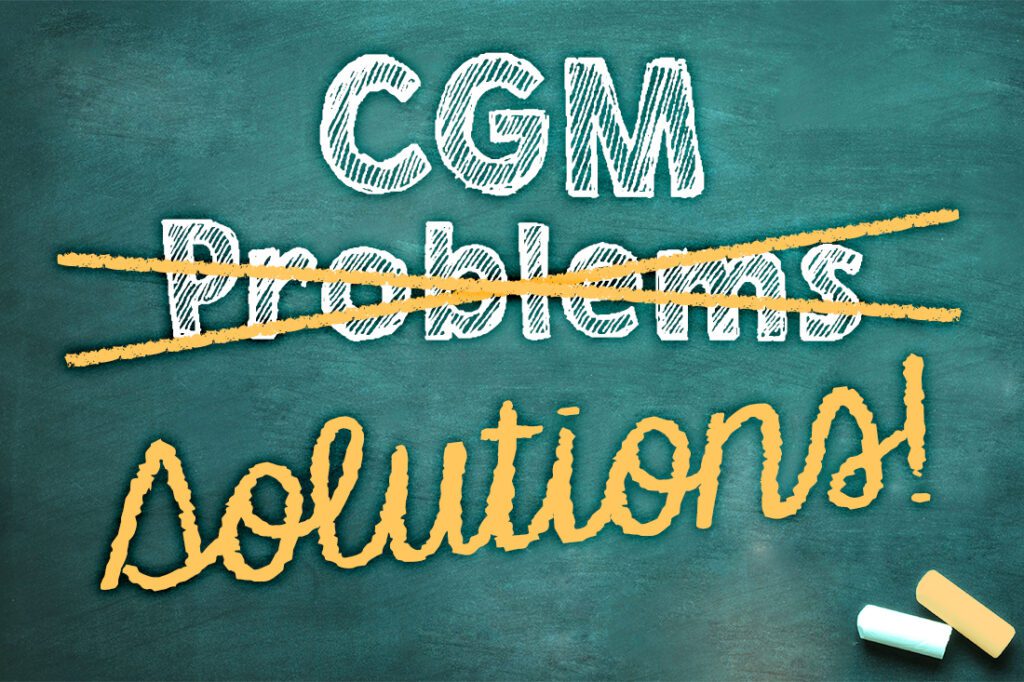Introduction
Living with diabetes can be a challenging journey, but thanks to modern technology, Continuous Glucose Monitors (CGMs) have revolutionized glucose monitoring. These devices offer real-time data, empowering individuals to manage their blood sugar levels more effectively. However, like any technology, CGMs can encounter issues. In this comprehensive guide, we will explore the troubleshooting steps for common CGM problems, ensuring your monitoring experience remains seamless and accurate. If you want to see either you or a friend qualify for a CGM, Fill out the form here.
Troubleshooting Common CGM Problems
CGM technology has come a long way, yet occasional challenges may arise. Here’s how to troubleshoot the most common CGM problems:
Sensor Errors: Unraveling the Dilemma
CGM sensors play a pivotal role in accurate glucose monitoring. However, encountering sensor errors is not uncommon. If you’re faced with a sensor error, consider these steps:
- Check Sensor Placement: Ensure your sensor is properly placed. Sometimes, an uneven application can lead to errors.
- Skin Preparation: Clean and dry your skin before attaching the sensor. Oils, lotions, or dirt can affect its adhesion.
- Restart the Sensor: Some errors can be resolved by restarting the sensor through the CGM’s app or device settings.
- Sensor Warm-Up: Allow sufficient warm-up time for the sensor before expecting accurate readings.
Inaccurate Readings: Navigating the Accuracy Maze
CGMs are designed for precise glucose monitoring, but occasionally, readings might seem off. Here’s how to enhance accuracy:
- Calibration Check: Regularly calibrate your CGM according to the manufacturer’s instructions for optimal accuracy.
- Blood Sugar Confirmation: If a reading seems exceptionally high or low, confirm with a traditional blood glucose test.
- Interference Factors: External factors like medications, hydration, and exercise can influence readings. Stay mindful of these variables.
- Sensor Aging: Over time, sensor accuracy might decline. Replacement sensors as directed by the manufacturer.
Read More About: Insulin Pump Integration
Skin Irritation Woes: Finding Comfort
Skin irritation around the sensor site can be uncomfortable. Follow these steps to mitigate irritation:
- Rotate Sites: Avoid placing sensors in the same spot consecutively. Rotate sites to give the skin time to heal.
- Skin Preparation: Clean the sensor site with mild soap and water, and consider using a skin barrier product.
- Hypoallergenic Tape: If you’re prone to skin sensitivities, hypoallergenic tapes can offer a protective barrier.
- Consult a Professional: Persistent irritation warrants medical attention. A healthcare provider can recommend suitable solutions.
FAQs
Q: How often should I calibrate my CGM?
Calibrate your CGM according to the manufacturer’s guidelines, usually 2-4 times a day, and whenever prompted by the device.
Q: May I swim or wash with my CGM?
Many CGMs are waterproof and designed to withstand brief submersion. However, consult the user manual to ensure specific guidelines.
Q: What if my CGM readings significantly differ from how I feel?
If you suspect inaccurate readings, perform a traditional blood glucose test to validate your current glucose levels.
Q: Are there foods or medications that can affect CGM accuracy?
Yes, certain foods, medications, and hydration levels can impact CGM accuracy. Stay mindful of these factors for reliable readings.
Q: Can I reuse CGM sensors?
Most CGM sensors are designed for single use only. Reusing them may lead to inaccurate readings and sensor errors.
Q: Is professional assistance necessary for CGM-related skin irritation?
If skin irritation persists or worsens, it’s advisable to consult a healthcare professional for personalized guidance.
Conclusion
Troubleshooting common CGM problems empowers you to navigate challenges confidently, ensuring your glucose monitoring remains accurate and reliable. Remember, every individual’s experience is unique, so don’t hesitate to reach out to your healthcare provider or CGM manufacturer’s support for additional assistance. By following these guidelines and being proactive, you can enjoy the full benefits of CGM technology while effectively managing your diabetes.


